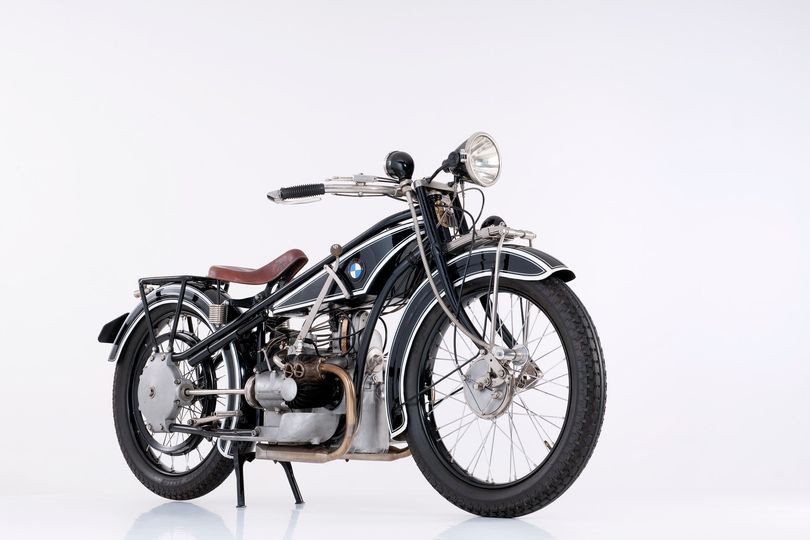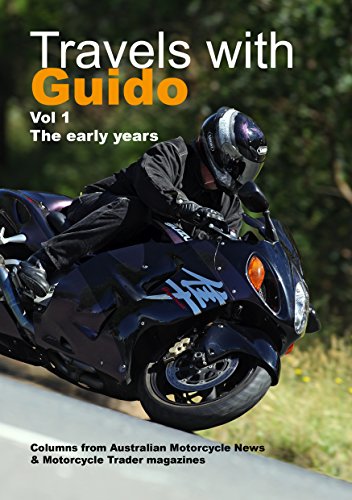Motorcycle Investor mag
Subscribe to our free email news
BMW R32
(by Ian Falloon, Mar 2022)

BMW's
foundation Boxer
For nearly 100 years
BMW has produced singles, twins, triples, fours and
sixes but the enduring
layout has been the boxer twin with shaft final drive.
This has become the
trademark that defines the BMW motorcycle and it all
began in 1923 with the
R32.
The R32 evolved from
BMW’s existing M2 B15 (2 for two cylinders and B for
boxer) but as the rear
cylinder tended to overheat on the M2 B15-powered
Victoria and Helios, designer
Max Friz decided to mount the engine transversely and
adding a shaft final
drive, and Friz had the drawings completed by December
1922.
Although the 1919
English Sopwith ABC motorcycle also featured a
transverse twin-cylinder engine
(without shaft drive), Friz claimed he was unaware of
the ABC at the time.
ABC’s designer Granville Bradshaw later accused BMW of
copying the ABC, but
there were too many detail differences for this to be
substantiated.
The R32 68 x 68mm
side-valve engine had a low 5:1 compression ratio and
with a single 22mm BMW
Special carburettor produced a moderate 8.5 horsepower
at 3200rpm. This was
slightly more than the M2 B15, but while the power
output didn’t set the world
alight, the R32’s design and execution was ground
breaking.
Concentrating on
reliability and ease of maintenance, the engine,
including the valve timing
system, was fully encased. Due to the shaft final drive
and inline crankshaft
there were no chains requiring adjustment so compared to
other 500s the R32 was
revolutionary. A hand lever operated the three-speed
grease-filled gearbox, and
the ignition was by a magneto generator via a rather
complicated set of
handlebar controls.
Friz installed this
engine in a closed twin-loop tubular steel frame, with
the fuel tank underneath
the upper frame tubes. The frame was brazed and sleeved,
but as the workers
lacked experience in brazing, fractures on the solder
joints were a problem
until the introduction of pressed steel frames in 1929.
The front suspension
consisted of a short swinging fork with a cantilever
plate spring beneath the
steering stem. The rigid frame meant the driveshaft
didn’t require a universal
joint, with a rubber disc a sufficient shock absorber,
Initially the only brake
was a rear wheel block type operated by the rider’s
heel, but by 1925, a front
150mm drum brake was introduced.
The R32 (R for Rad
meaning wheel but the 32 remains a mystery) was also
surprisingly light at
122kg and offered a top speed of around 90 km/h. The low
centre of gravity,
short 1380mm wheelbase and 26-inch wheels promised safe
and manageable handling
for a touring motorcycle on the poor quality roads of
the day.
In May 1923, Friz
himself tested the R32, finishing the “Fahrt durch
Bayerns Berge” trial through
the Bavarian mountains without incurring any penalties.
The R32 was launched
at Berlin in September 1923, one month before the Paris
Car Show where it was a
star attraction, establishing BMW’s boxer-twin
shaft-drive format.
Despite its impressive
credentials the initial response to the R32 was mixed.
Sceptics feared the
engine could be easily damaged in a fall, others felt it
underpowered, but no
one could deny the compact engine and transmission unit
was a brilliant design
and beautifully executed.
As cars were for the
wealthy few the motorcycle market flourished in Germany
during the early 1920s,
BMW managing to sell 1500 R32s by the end of 1924, with
sales totalling 3090 by
the time production finished in 1926. Most were sold in
Germany and it is
estimated only around 60 survive today.
Despite its modest
specification the R32 was the founder of the species and
holds a special place
in BMW’s history, serious collectors considering it the
most desirable BMW
motorcycle.
-------------------------------------------------
Produced by AllMoto abn 61 400 694 722
Privacy: we do not collect cookies or any other data.

Archives
Contact





